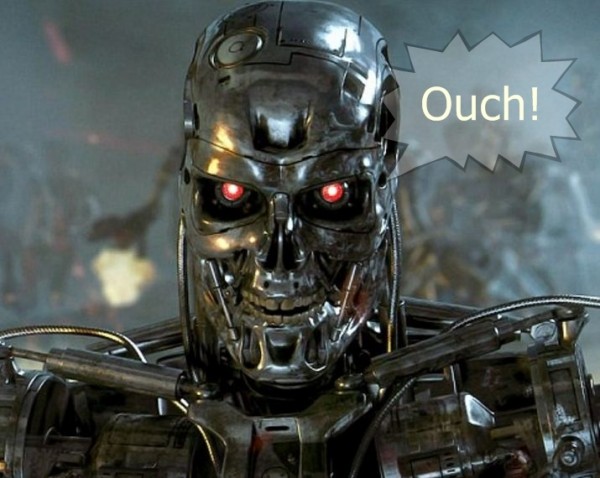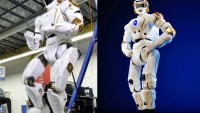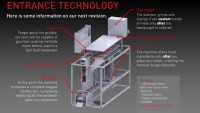Robots that Feel Pain will Save Us from Killer ‘Terminators’
| Arthur Dominic Villasanta | | May 29, 2016 08:38 PM EDT |
Pained Terminator
Pain is good -- at least for robots. It might also save their mechanical lives. With that in mind, researchers from Leibniz University in Hannover, Germany are engaged in a project whose aim is to develop an "artificial robot nervous system to teach robots how to feel pain."
And the point of teaching robots what "Ouch!" feels like?
Like Us on Facebook
It's to get these mechanical beasts to react to pain so the pain-causing event avoids damaging their systems. Robots that know what pain feels like can also warn human co-workers there's something's wrong here.
"Pain is a system that protects us," said Johannes Kuehn, one of the researchers. "When we evade from the source of pain, it helps us not get hurt."
He noted that humans that don't have the ability to feel pain (there are such people) are injured far more often since their bodies don't instinctively react to things that hurt them. About one in a million persons are born without a sense of pain, which is caused by a mutated gene.
Kuehn and his collaborator, Professor Sami Haddadin, one of the world's foremost experts in physical human-robot interaction and safety, described their robot pain project at the recent IEEE International Conference on Robotics and Automation (ICRA) in Stockholm, Sweden.
Kuehn and Haddadin's device that teaches robots to feel pain is a bio-inspired robot controller that mimics human pain mechanisms. This "reflex controller" reflexively reacts to protect the robot from potentially damaging interactions.
Artificial neurons in the robot's reflex controller will transmit the pain signals, allowing the machine to determine the severity of the pain, from light to severe, and respond accordingly.
Kuehn and Haddadin argue that a robot needs to be able to detect and classify unforeseen physical states and disturbances such as pain. The robot should also be able to rate the potential damage the source of pain might cause to it, and take countermeasures. In other words, the robot has to use its reflex controller.
Both men's research is devoted to the "formalization of robot pain, based on insights from human pain research, as an interpretation of tactile sensation."
A video illustrating this point shows a prototype of the reflex controller running on a Kuka arm equipped with a BioTac tactile fingertip sensor. The YouTube video can be viewed here.
Does this mean the Series 850 Terminators Sgt. Kyle Reese fought against wouldn't be the mass murderers they are if they could feel pain and knew pain hurts?
Sounds like a good plot for the next Terminator movie.
TagsRobot, Pain, Leibniz University, Johannes Kuehn, Sami Haddadin, reflex controller
©2015 Chinatopix All rights reserved. Do not reproduce without permission
EDITOR'S PICKS
-

Did the Trump administration just announce plans for a trade war with ‘hostile’ China and Russia?
-

US Senate passes Taiwan travel bill slammed by China
-

As Yan Sihong’s family grieves, here are other Chinese students who went missing abroad. Some have never been found
-

Beijing blasts Western critics who ‘smear China’ with the term sharp power
-

China Envoy Seeks to Defuse Tensions With U.S. as a Trade War Brews
-

Singapore's Deputy PM Provides Bitcoin Vote of Confidence Amid China's Blanket Bans
-

China warns investors over risks in overseas virtual currency trading
-

Chinese government most trustworthy: survey
-

Kashima Antlers On Course For Back-To-Back Titles
MOST POPULAR
LATEST NEWS
Zhou Yongkang: China's Former Security Chief Sentenced to Life in Prison

China's former Chief of the Ministry of Public Security, Zhou Yongkang, has been given a life sentence after he was found guilty of abusing his office, bribery and deliberately ... Full Article
TRENDING STORY

China Pork Prices Expected to Stabilize As The Supplies Recover

Elephone P9000 Smartphone is now on Sale on Amazon India

There's a Big Chance Cliffhangers Won't Still Be Resolved When Grey's Anatomy Season 13 Returns

Supreme Court Ruled on Samsung vs Apple Dispute for Patent Infringement

Microsoft Surface Pro 5 Rumors and Release Date: What is the Latest?














